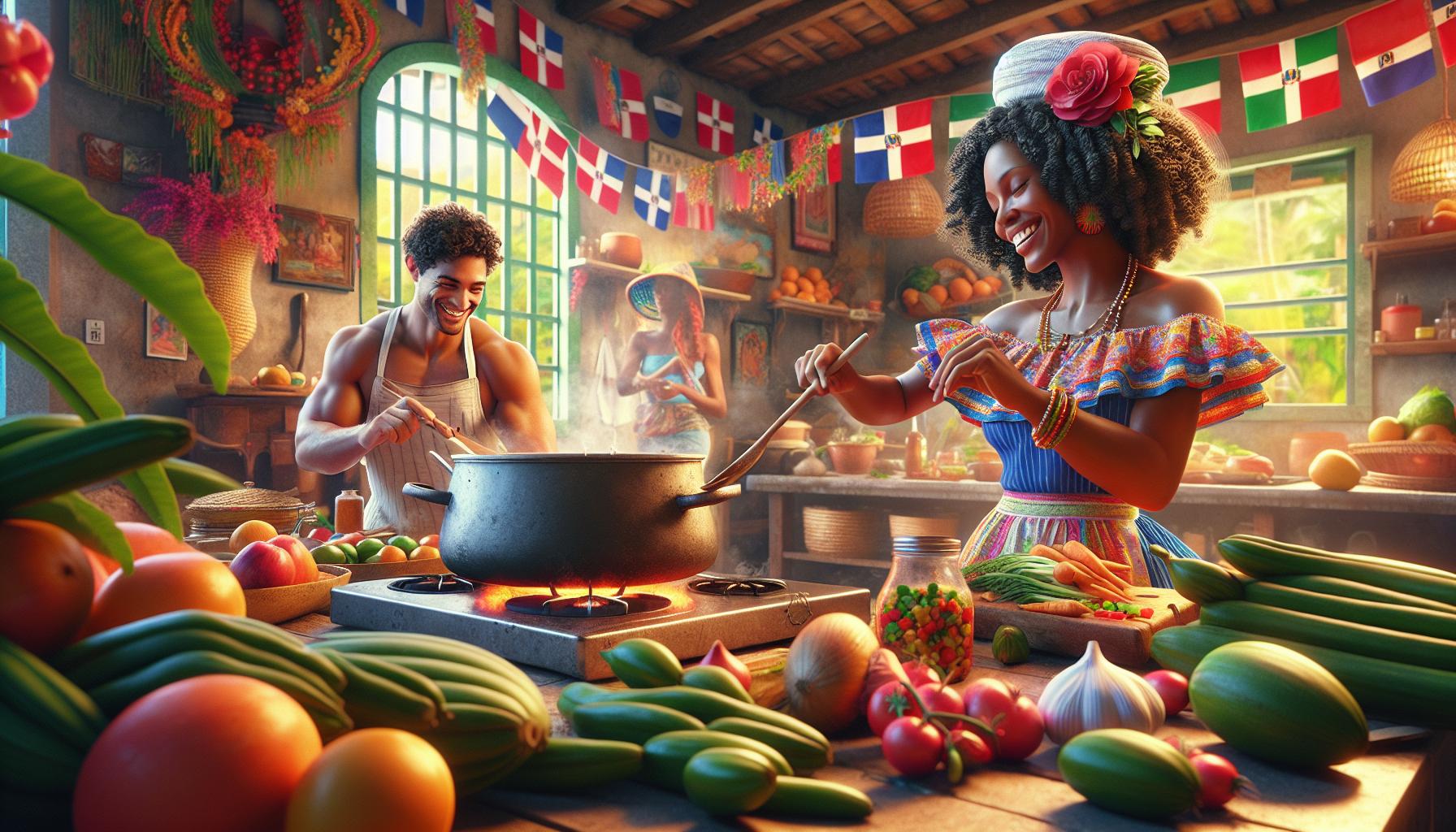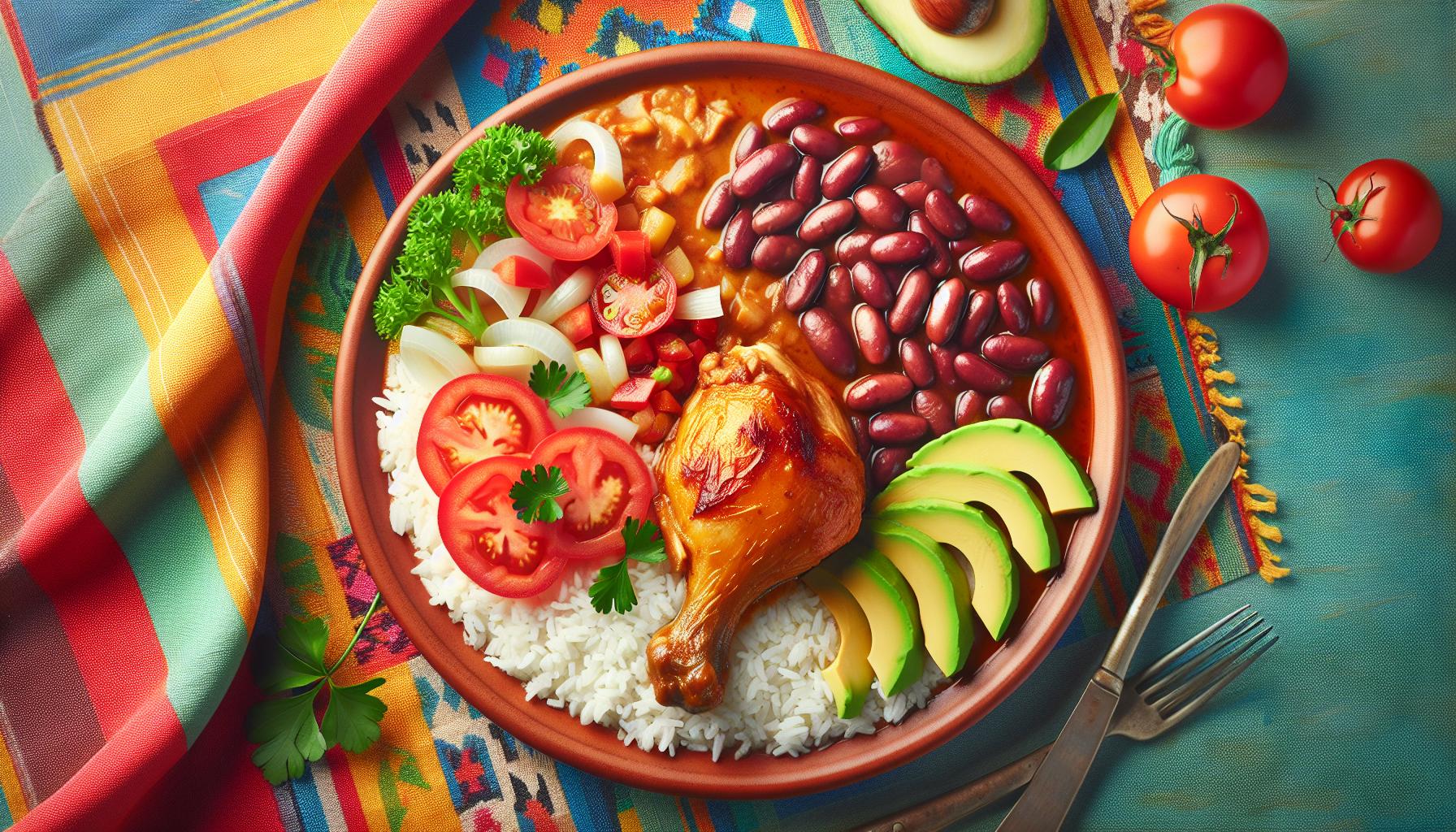Physical Address
304 North Cardinal St.
Dorchester Center, MA 02124

Dominican cuisine tells a vibrant story of cultural fusion where African Spanish and Taíno influences come together in a mouthwatering symphony of flavors. From the sizzling plantains to the hearty La Bandera (the national dish) Dominican food culture reflects the nation’s rich heritage and love for communal dining.
The heart of Dominican cooking lies in its use of fresh local ingredients combined with time-honored cooking techniques passed down through generations. Whether it’s the aromatic sofrito base that starts many dishes or the beloved mangú served for breakfast these recipes aren’t just meals – they’re celebrations of Dominican identity and family bonds. The kitchen serves as a gathering place where stories are shared laughter echoes and traditions continue to thrive in modern times.
Dominican cuisine emerged from centuries of cultural blending, creating a distinct gastronomic identity. The integration of diverse culinary traditions shaped the country’s food culture through multiple historical periods.
Spanish colonization introduced essential ingredients like rice, wheat, olive oil, garlic, onions, cattle, pork products to the Dominican Republic in the 15th century. African culinary practices arrived through the slave trade, bringing techniques like deep frying, stewing, and the use of plantains. Signature dishes showcase this fusion – Locrio combines Spanish paella techniques with African-influenced seasonings. Mofongo exemplifies African cooking methods using plantains as the base. The Spanish contribution of sofrito (sautéed aromatics) became foundational in Dominican cooking, while African influences appear in dishes like mangú and traditional cooking methods using cast iron pots.
The Taino people established the foundation of Dominican cuisine through their agricultural practices and cooking methods. Cassava cultivation led to casabe, a flatbread that remains popular today. Taino farmers introduced key crops like sweet potatoes, corn, peanuts, tropical fruits to the Dominican diet. Their barbacoa cooking technique evolved into modern barbecue methods. The Taino people developed unique food preservation methods using smoke and salt, particularly for fish and wild game. Their agricultural wisdom in growing native crops adapted to the tropical climate continues to influence modern Dominican farming practices.

Dominican cuisine centers on hearty staples that reflect the country’s diverse cultural heritage. These foundational ingredients form the basis of daily meals in households across the Dominican Republic.
La Bandera Dominicana (“The Dominican Flag”) represents the cornerstone of Dominican lunch. This complete meal consists of white rice, red kidney beans stewed in a savory sauce, and braised meat. Fresh vegetables accompany the dish, including tomatoes, lettuce or avocado. The rice absorbs the rich bean sauce, creating a harmonious blend of flavors. Local cooks prepare the meat component through various methods: stewed chicken (pollo guisado), braised beef (carne guisada) or fried pork chops (chuletas fritas). This iconic combination appears on Dominican tables daily between 12-2 PM, marking the main meal of the day.
Root vegetables form the foundation of Dominican cooking, with yuca, ñame, yautía, batata appearing in numerous dishes. Plantains emerge as the most versatile ingredient, transforming into tostones (fried green plantains), plátanos maduros (sweet ripe plantains) or mangú (mashed plantains). Dominican kitchens incorporate these starches into breakfast, lunch or dinner preparations. Yuca serves as the base for casabe, a traditional flatbread dating back to Taíno times. These vegetables appear in sancochos (hearty stews), as side dishes or main course components. Fresh tropical tubers arrive daily at local markets, ensuring their constant presence in Dominican meals.
Dominican cooking methods reflect generations of culinary expertise combining African stewing techniques, Spanish roasting traditions, and indigenous slow-cooking practices. These methods create the signature flavors that define Dominican gastronomy.
Dominican slow-cooking traditions center on guisados (stews) cooked in traditional calderos (heavy-bottom pots). Braising meats like goat, beef, or chicken occurs over low heat for 3-4 hours to develop rich flavors. La Carne Guisada preparation involves searing meat to lock in moisture before simmering with aromatics. Sancocho, a hearty meat stew, simmers for 6-8 hours with root vegetables in large pots. Traditional cooks use wooden spoons to stir these dishes, preserving the authentic flavors while preventing scratches on cookware.
Sofrito forms the foundation of Dominican seasoning, combining onions, garlic, bell peppers, cilantro, oregano. Traditional Dominican kitchens prepare large batches of sofrito to store in glass containers for daily use. Sazón completo blends multiple spices including cumin, coriander, adobo, oregano. The seasoning process called “adobar” marinates meats for 4-6 hours using bitter oranges, lime juice, garlic. Recaito, a green seasoning paste, combines culantro, garlic, onions, ajíes (Dominican peppers) for enhanced flavor depth.
| Common Spice Blend | Key Ingredients | Typical Use |
|---|---|---|
| Sofrito | Onions, Garlic, Peppers | Base for stews |
| Sazón | Cumin, Oregano, Adobo | Meat seasoning |
| Recaito | Culantro, Ajíes, Garlic | Sauce base |
The Dominican Republic’s diverse geography creates distinct culinary zones, each offering unique regional specialties. From coastal seafood to mountain delicacies, each region showcases local ingredients and traditional cooking methods.
Dominican coastal regions serve fresh seafood dishes that reflect the Caribbean’s abundant marine life. Pescado con coco combines fresh fish with coconut milk sauce, popular in Samaná Bay restaurants. Samana’s signature dish, pescado frito, features whole fried fish seasoned with lime and garlic. Coastal towns like Puerto Plata specialize in lambi guisado, a savory conch stew prepared with tomatoes, onions and bell peppers. Beach areas offer grilled langostinos (prawns) marinated in bitter orange and Dominican oregano. Fresh ceviches mix local fish with lime juice, red onions and cilantro.
The Cordillera Central region produces distinctive mountain dishes using local ingredients and preservation methods. Chivo liniero, a slow-cooked goat dish, originates from the mountain town of Jarabacoa. Farmers in Constanza valley create hearty soups like crema de auyama using locally grown pumpkins and root vegetables. Mountain communities prepare habichuelas con dulce, a sweet bean dessert, during religious celebrations. Local cheese producers craft queso de hoja, a traditional white cheese wrapped in banana leaves. High-altitude areas specialize in chenchen, a cracked corn dish served with braised goat meat.
Dominican dining culture centers on communal experiences that strengthen family bonds and community connections. Meals serve as daily celebrations where food becomes a catalyst for social interaction and cultural expression.
Dominican families gather for extended lunches that often last 2-3 hours, transforming ordinary meals into meaningful social events. The dining table accommodates multiple generations, with grandparents sharing stories while passing traditional dishes like sancocho or pasteles en hoja. Special occasions such as Christmas Eve feature elaborate feasts with whole roasted pig (cerdo asado), accompanied by moro de guandules con coco. Weekly Sunday lunches remain a sacred tradition where relatives unite over La Bandera Dominicana, enhanced by animated conversations about family news, community updates and shared memories.
Dominican street food creates vibrant social spaces where locals connect over quick, flavorful bites throughout the day. Food carts and small stands called “puestos” populate busy corners, serving classics like chimis (Dominican burgers), yaroa (loaded fries with meat and cheese) and empanadas. Evening gatherings at popular food zones feature vendors selling quipes, pica pollo and fresh fruit jugos, attracting groups of friends and coworkers. Street food locations transform into community hubs where vendors know regular customers by name, fostering relationships beyond simple transactions.
Contemporary Dominican cuisine celebrates tradition while embracing innovation through sustainable practices and global influences. The evolving food scene maintains cultural authenticity while incorporating modern culinary techniques.
Dominican restaurants increasingly source ingredients directly from local farmers, creating sustainable food systems across the island. Small-scale organic farms supply fresh produce to upscale restaurants in Santo Domingo, Puerto Plata and Punta Cana. Chefs partner with fishermen along the coast to serve catch-of-the-day specials featuring fresh mahi-mahi, red snapper and Caribbean lobster. Farm-to-table initiatives support indigenous crop varieties like yuca, batata and tropical fruits grown using traditional methods. Many restaurants now maintain their own herb gardens, growing cilantro, oregano and other aromatics essential to Dominican sofrito.
Dominican chefs blend traditional recipes with international techniques to create innovative dishes. Fine dining establishments incorporate French culinary methods into classic Dominican preparations of goat, pork and seafood. Asian-Dominican fusion restaurants combine local ingredients with Japanese, Korean and Chinese cooking styles. Popular fusion dishes include plantain sushi rolls, yuca spring rolls and coconut curry sancocho. Contemporary Dominican food trucks serve creative versions of street food classics like yaroa topped with international sauces. High-end restaurants present deconstructed versions of comfort foods like mangú three ways or molecularly transformed habichuelas.
Dominican food culture stands as a testament to the power of cultural fusion and tradition. The harmonious blend of African Spanish and Taíno influences has created a cuisine that’s both distinctive and deeply rooted in family values. From the bustling street food stands to elaborate family feasts Dominican gastronomy continues to evolve while maintaining its authentic soul.
Today’s Dominican cuisine perfectly balances time-honored traditions with modern innovations proving that food is more than sustenance – it’s a celebration of heritage community and life itself. As this vibrant culinary landscape adapts to contemporary trends it remains anchored in the warmth of family gatherings and the joy of sharing meals together.